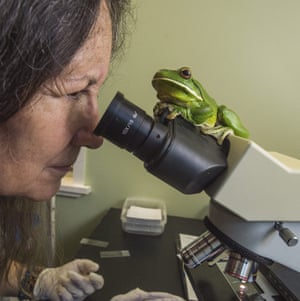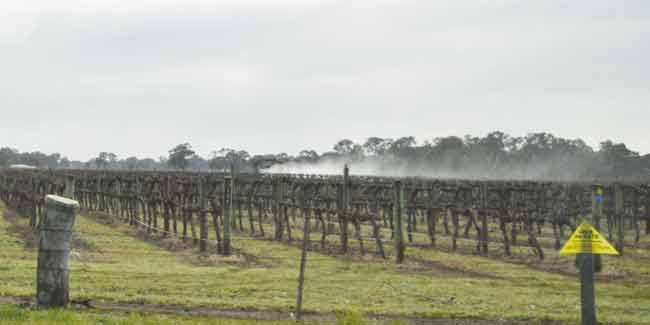A baseline study of organic contaminants in the Swan and Canning catchment drainage system using passive sampling devices. Government of Western Australia Department of Water. December 2009
Liege Street Wetlands, WA
The estimated concentration in water (ng/L) of insecticides predicted from the accumulation in PDMS strips deployed during September- October 2006.
Phosphate tri-n-butyl: 11ng/L (Replicate A), 14ng/L (Replicate B)
Diazinon: <6ng/L (Replicate A), <6ng/L (Replicate B)
Terbutryn: <3ng/L ( Replicate A), <3ng/L ( Replicate B)
Chlorpyrifos: 0.6ng/L ( Replicate A), 1ng/L ( Replicate B)
Fenitrothion: <3ng/L (Replicate A), <3ng/L (Replicate B)
Metolachlor: <7ng/L (Replicate A), <7ng/L (Replicate B)
Heptachlor Epoxide: <1ng/L (Replicate A), <1ng/L (Replicate B)
Chordane trans: <1ng/L (Replicate A), <1ng/L (Replicate B)
Oxadiazon: <0.5ng/L (Replicate A), <0.5ng/L (Replicate B)
Dieldrin: 3ng/L (Replicate A), 4ng/L (Replicate B)
Piperonyl Butoxide: 1ng/L (Replicate A), 2ng/L (Replicate B)
Propiconazole: <2ng/L (Replicate A), <2ng/L (Replicate B)
The concentration in water (ng/L) of herbicides, detected in snapshot water samples collected during September - October 2006.
Diuron: 36ng/L
Simazine: 43ng/L
Atrazine: 3.4ng/L
Hexazinone: <1ng/L
Deployment period two; January - February 2007
The estimated concentration in water (CW) (ng/L) of herbicides predicted from ED passive samplers deployed in January - February 2007 in sub-catchments near Perth. The sampling rates used 0.12 L/day.
Diuron: (Replicate A) 7.6ng/ED, 2Cw. (Replicate B) 7.8ng/ED, 2.1Cw. 2.9 ND%
Simazine: (Replicate A) 4ng/ED, 1.1Cw. (Replicate B) <1ng/ED, <0.3Cw. - ND%
Atrazine: (Replicate A) <1ng/ED, <0.3Cw. (Replicate B) <1ng/ED, <0.3Cw. - ND%
Desethyl Atrazine: (Replicate A) 2ng/ED, 1Cw. (Replicate B) 0.3ng/ED, 0.6Cw. 14 ND%
Desisopropyl Atrazine: (Replicate A) <1ng/ED, <0.3Cw. (Replicate B) <1ng/ED, <0.3Cw. - ND%
Hexazinone: (Replicate A) <1ng/ED, <0.3Cw. (Replicate B) <1ng/ED, <0.3Cw. - ND%
Ametryn: (Replicate A) <1ng/ED, <0.3Cw. (Replicate B) <1ng/ED, <0.3Cw. - ND%
Mean ND 2.9%
The estimated concentration in water (ng/L) of insecticides predicted from PDMS passive samplers deployed during January - February 2007 in sub-catchments near Perth.
Phosphate Tri-n-butyl: 3ng/L (Replicate A), 3ng/L (Replicate B)
Trifluralin: <0.5ng/L (Replicate A), <0.5ng/L (Replicate B)
Diazinon: <6ng/L (Replicate A), <6ng/L (Replicate B)
Terbuthylazine: <8ng/L (Replicate A), <8ng/L (Replicate B)
Triallate: <0.5ng/L (Replicate A), <0.5ng/L (Replicate B)
Terbutryn: <3ng/L (Replicate A), <3ng/L (Replicate B)
Chlorpyrifos: <0.5ng/L (Replicate A), <0.5ng/L (Replicate B)
Chlordane Trans: <1ng/L (Replicate A), <1ng/L (Replicate B)
Dieldrin: <0.5ng/L (Replicate A), 0.6ng/L (Replicate B)
Propiconazole: <3ng/L (Replicate A), <3ng/L (Replicate B)
Mean ND%: 0
Deployment period three; April - May 2007
The estimated concentration in water (CW) (ng/L) of herbicides predicted from ED passive samplers deployed in January - February 2007 in sub-catchments near Perth. The sampling rates used 0.12 L/day.
Diuron: (Replicate A) 162ng/ED, 52Cw. (Replicate B) 138ng/ED, 44Cw. 16.4 ND%
Simazine: (Replicate A) 27ng/ED, 8.8Cw. (Replicate B) 26ng/ED, 8.5Cw. 3.1 ND%
Atrazine: (Replicate A) 14ng/ED, 4.8Cw. (Replicate B) 15ng/ED, 4.8Cw. 1.3 ND%
Desethyl Atrazine: (Replicate A) <1ng/ED, <0.3Cw. (Replicate B) <1ng/ED, <0.3Cw. - ND%
Desisopropyl Atrazine: (Replicate A) <1ng/ED, <0.3Cw. (Replicate B) <1ng/ED, <0.3Cw. - ND%
Hexazinone: (Replicate A) <1ng/ED, <0.3Cw. (Replicate B) <1ng/ED, <0.3Cw. - ND%
Mean ND 6.9%
The concentration in water (ng/L) of herbicides, detected in snapshot water samples collected during April - May 2007.
Diuron: Replicates 16 Apr 220ng/L, 23 Apr 199ng/L. Mean 23 Apr 209ng/L
Simazine: Replicates 16 Apr 18ng/L, 23 Apr 22ng/L. Mean 23 Apr 20ng/L
Atrazine: Replicates 16 Apr 9.1ng/L, 23 Apr 10ng/L. Mean 23 Apr 9.5ng/L
Desethyl Atrazine: Replicates 16 Apr <1ng/L, 23 Apr <1ng/L. Mean 23 Apr <1ng/L
Desisopropyl Atrazine: Replicates 16 Apr <1ng/L, 23 Apr <1ng/L. Mean 23 Apr <1ng/L
Hexazinone: Replicates 16 Apr <1ng/L, 23 Apr <1ng/L. Mean 23 Apr <1ng/L
Ametryn: Replicates 16 Apr <1ng/L, 23 Apr <1ng/L. Mean 23 Apr <1ng/L
The estimated concentration in water (ng/L) of insecticides predicted from PDMS passive samplers deployed during April - May 2007 in subcatchments near Perth.
Phosphate Tri-n-Butyl: 14ng/L (Replicate A), 12ng/L (Replicate B)
Trifluralin: <0.5ng/L (Replicate A), <0.5ng/L (Replicate B)
Diazinon: <6ng/L (Replicate A), <6ng/L (Replicate B)
Propazine: <10ng/L (Replicate A), <10ng/L (Replicate B)
Terbutryn: <3ng/L (Replicate A), <3ng/L (Replicate B)
Chlorpyrifos: 3ng/L (Replicate A), 3ng/L (Replicate B)
Metolachlor: 13ng/L (Replicate A), 9ng/L (Replicate B)
Hepatchor Epoxide: <1ng/L (Replicate A), <1ng/L (Replicate B)
Chlordane Trans: <1ng/L (Replicate A), <1ng/L (Replicate B)
Oxadiazon: <0.5ng/L (Replicate A), <0.5ng/L (Replicate B)
Dieldrin: <0.5ng/L (Replicate A), <0.5ng/L (Replicate B)
Piperonyl Butoxide: 5ng/L (Replicate A), 5ng/L (Replicate B)
Benalaxyl: <3ng/L (Replicate A), <3ng/L (Replicate B)
Propiconazole: <3ng/L (Replicate A), <3ng/L (Replicate B)
Bifenthrin: <1g/L (Replicate A), <1ng/L (Replicate B)
Rotenone: <2ng/L (Replicate A), <2ng/L (Replicate B)
Mean ND 10%
Deployment period four; July - August 2007
The estimated concentration in water (ng/L) of herbicides predicted from ED passive samplers deployed in July - August 2007 in subcatchments near Perth. The sampling rates used 0.12 L/day.
Diuron: 8.8ng/L (Replicate A), 9ng/L (Replicate B)
Simazine: 12ng/L (Replicate A), 13ng/L (Replicate B)
Atrazine: 2.2ng/L (Replicate A), 2.5ng/L (Replicate B)
Desethyl Atrazine: <1ng/L (Replicate A), <1ng/L (Replicate B)
Desisopropyl Atrazine: 1.8ng/L (Replicate A), 1.8ng/L (Replicate B)
Hexazinone: 0.9ng/L (Replicate A), 1ng/L (Replicate B)
Tebuthiuron: <1ng/L (Replicate A), <1ng/L (Replicate B)
The estimated concentration in water (ng/L) of insecticides predicted from PDMS passive samplers deployed during July - August 2007 in subcatchments near Perth.
Phosphate Tri-n-Butyl: 6ng/L (Replicate A), 6ng/L (Replicate B)
Trifluralin: <0.5ng/L (Replicate A), <0.5ng/L (Replicate B)
Diazinon: <6ng/L (Replicate A), <6ng/L (Replicate B)
Triallate: <0.5ng/L (Replicate A), <0.5ng/L (Replicate B)
Terbutryn: 4ng/L (Replicate A), 4ng/L (Replicate B)
Chlorpyrifos: 1ng/L (Replicate A), 1ng/L (Replicate B)
Metolachlor: <8ng/L (Replicate A), 6ng/L (Replicate B)
Hepatchor Epoxide: <1ng/L (Replicate A), <1ng/L (Replicate B)
Pendimethalin: <1ng/L (Replicate A), <1ng/L (Replicate B)
Chlordane Trans: <1ng/L (Replicate A), <1ng/L (Replicate B)
Methidathion: <30ng/L (Replicate A), <30ng/L (Replicate B)
Oxadiazon: <0.5ng/L (Replicate A), <0.5ng/L (Replicate B)
Dieldrin: 2ng/L (Replicate A), 2ng/L (Replicate B)
Piperonyl Butoxide: 2ng/L (Replicate A), 2ng/L (Replicate B)
Benalaxyl: 3ng/L (Replicate A), 3ng/L (Replicate B)
Propiconazole: <3ng/L (Replicate A), <3ng/L (Replicate B)
Bifenthrin: <1ng/L (Replicate A), <1ng/L (Replicate B)
Mean ND 5
A baseline study of organic contaminants in the Swan and Canning catchment drainage system using passive sampling devices. Government of Western Australia Department of Water. December 2009
Liege Street Wetlands, WA
The estimated concentration in water (ng/L) of insecticides predicted from the accumulation in PDMS strips deployed during September- October 2006.
Phosphate tri-n-butyl: 11ng/L (Replicate A), 14ng/L (Replicate B)
Diazinon: <6ng/L (Replicate A), <6ng/L (Replicate B)
Terbutryn: <3ng/L ( Replicate A), <3ng/L ( Replicate B)
Chlorpyrifos: 0.6ng/L ( Replicate A), 1ng/L ( Replicate B)
Fenitrothion: <3ng/L (Replicate A), <3ng/L (Replicate B)
Metolachlor: <7ng/L (Replicate A), <7ng/L (Replicate B)
Heptachlor Epoxide: <1ng/L (Replicate A), <1ng/L (Replicate B)
Chordane trans: <1ng/L (Replicate A), <1ng/L (Replicate B)
Oxadiazon: <0.5ng/L (Replicate A), <0.5ng/L (Replicate B)
Dieldrin: 3ng/L (Replicate A), 4ng/L (Replicate B)
Piperonyl Butoxide: 1ng/L (Replicate A), 2ng/L (Replicate B)
Propiconazole: <2ng/L (Replicate A), <2ng/L (Replicate B)
The concentration in water (ng/L) of herbicides, detected in snapshot water samples collected during September – October 2006.
Diuron: 36ng/L
Simazine: 43ng/L
Atrazine: 3.4ng/L
Hexazinone: <1ng/L
Deployment period two; January – February 2007
The estimated concentration in water (CW) (ng/L) of herbicides predicted from ED passive samplers deployed in January – February 2007 in sub-catchments near Perth. The sampling rates used 0.12 L/day.
Diuron: (Replicate A) 7.6ng/ED, 2Cw. (Replicate B) 7.8ng/ED, 2.1Cw. 2.9 ND%
Simazine: (Replicate A) 4ng/ED, 1.1Cw. (Replicate B) <1ng/ED, <0.3Cw. – ND%
Atrazine: (Replicate A) <1ng/ED, <0.3Cw. (Replicate B) <1ng/ED, <0.3Cw. – ND%
Desethyl Atrazine: (Replicate A) 2ng/ED, 1Cw. (Replicate B) 0.3ng/ED, 0.6Cw. 14 ND%
Desisopropyl Atrazine: (Replicate A) <1ng/ED, <0.3Cw. (Replicate B) <1ng/ED, <0.3Cw. – ND%
Hexazinone: (Replicate A) <1ng/ED, <0.3Cw. (Replicate B) <1ng/ED, <0.3Cw. – ND%
Ametryn: (Replicate A) <1ng/ED, <0.3Cw. (Replicate B) <1ng/ED, <0.3Cw. – ND%
Mean ND 2.9%
The estimated concentration in water (ng/L) of insecticides predicted from PDMS passive samplers deployed during January – February 2007 in sub-catchments near Perth.
Phosphate Tri-n-butyl: 3ng/L (Replicate A), 3ng/L (Replicate B)
Trifluralin: <0.5ng/L (Replicate A), <0.5ng/L (Replicate B)
Diazinon: <6ng/L (Replicate A), <6ng/L (Replicate B)
Terbuthylazine: <8ng/L (Replicate A), <8ng/L (Replicate B)
Triallate: <0.5ng/L (Replicate A), <0.5ng/L (Replicate B)
Terbutryn: <3ng/L (Replicate A), <3ng/L (Replicate B)
Chlorpyrifos: <0.5ng/L (Replicate A), <0.5ng/L (Replicate B)
Chlordane Trans: <1ng/L (Replicate A), <1ng/L (Replicate B)
Dieldrin: <0.5ng/L (Replicate A), 0.6ng/L (Replicate B)
Propiconazole: <3ng/L (Replicate A), <3ng/L (Replicate B)
Mean ND%: 0
Deployment period three; April – May 2007
The estimated concentration in water (CW) (ng/L) of herbicides predicted from ED passive samplers deployed in January – February 2007 in sub-catchments near Perth. The sampling rates used 0.12 L/day.
Diuron: (Replicate A) 162ng/ED, 52Cw. (Replicate B) 138ng/ED, 44Cw. 16.4 ND%
Simazine: (Replicate A) 27ng/ED, 8.8Cw. (Replicate B) 26ng/ED, 8.5Cw. 3.1 ND%
Atrazine: (Replicate A) 14ng/ED, 4.8Cw. (Replicate B) 15ng/ED, 4.8Cw. 1.3 ND%
Desethyl Atrazine: (Replicate A) <1ng/ED, <0.3Cw. (Replicate B) <1ng/ED, <0.3Cw. – ND%
Desisopropyl Atrazine: (Replicate A) <1ng/ED, <0.3Cw. (Replicate B) <1ng/ED, <0.3Cw. – ND%
Hexazinone: (Replicate A) <1ng/ED, <0.3Cw. (Replicate B) <1ng/ED, <0.3Cw. – ND%
Mean ND 6.9%
The concentration in water (ng/L) of herbicides, detected in snapshot water samples collected during April – May 2007.
Diuron: Replicates 16 Apr 220ng/L, 23 Apr 199ng/L. Mean 23 Apr 209ng/L
Simazine: Replicates 16 Apr 18ng/L, 23 Apr 22ng/L. Mean 23 Apr 20ng/L
Atrazine: Replicates 16 Apr 9.1ng/L, 23 Apr 10ng/L. Mean 23 Apr 9.5ng/L
Desethyl Atrazine: Replicates 16 Apr <1ng/L, 23 Apr <1ng/L. Mean 23 Apr <1ng/L
Desisopropyl Atrazine: Replicates 16 Apr <1ng/L, 23 Apr <1ng/L. Mean 23 Apr <1ng/L
Hexazinone: Replicates 16 Apr <1ng/L, 23 Apr <1ng/L. Mean 23 Apr <1ng/L
Ametryn: Replicates 16 Apr <1ng/L, 23 Apr <1ng/L. Mean 23 Apr <1ng/L
The estimated concentration in water (ng/L) of insecticides predicted from PDMS passive samplers deployed during April – May 2007 in subcatchments near Perth.
Phosphate Tri-n-Butyl: 14ng/L (Replicate A), 12ng/L (Replicate B)
Trifluralin: <0.5ng/L (Replicate A), <0.5ng/L (Replicate B)
Diazinon: <6ng/L (Replicate A), <6ng/L (Replicate B)
Propazine: <10ng/L (Replicate A), <10ng/L (Replicate B)
Terbutryn: <3ng/L (Replicate A), <3ng/L (Replicate B)
Chlorpyrifos: 3ng/L (Replicate A), 3ng/L (Replicate B)
Metolachlor: 13ng/L (Replicate A), 9ng/L (Replicate B)
Hepatchor Epoxide: <1ng/L (Replicate A), <1ng/L (Replicate B)
Chlordane Trans: <1ng/L (Replicate A), <1ng/L (Replicate B)
Oxadiazon: <0.5ng/L (Replicate A), <0.5ng/L (Replicate B)
Dieldrin: <0.5ng/L (Replicate A), <0.5ng/L (Replicate B)
Piperonyl Butoxide: 5ng/L (Replicate A), 5ng/L (Replicate B)
Benalaxyl: <3ng/L (Replicate A), <3ng/L (Replicate B)
Propiconazole: <3ng/L (Replicate A), <3ng/L (Replicate B)
Bifenthrin: <1g/L (Replicate A), <1ng/L (Replicate B)
Rotenone: <2ng/L (Replicate A), <2ng/L (Replicate B)
Mean ND 10%
Deployment period four; July – August 2007
The estimated concentration in water (ng/L) of herbicides predicted from ED passive samplers deployed in July – August 2007 in subcatchments near Perth. The sampling rates used 0.12 L/day.
Diuron: 8.8ng/L (Replicate A), 9ng/L (Replicate B)
Simazine: 12ng/L (Replicate A), 13ng/L (Replicate B)
Atrazine: 2.2ng/L (Replicate A), 2.5ng/L (Replicate B)
Desethyl Atrazine: <1ng/L (Replicate A), <1ng/L (Replicate B)
Desisopropyl Atrazine: 1.8ng/L (Replicate A), 1.8ng/L (Replicate B)
Hexazinone: 0.9ng/L (Replicate A), 1ng/L (Replicate B)
Tebuthiuron: <1ng/L (Replicate A), <1ng/L (Replicate B)
The estimated concentration in water (ng/L) of insecticides predicted from PDMS passive samplers deployed during July – August 2007 in subcatchments near Perth.
Phosphate Tri-n-Butyl: 6ng/L (Replicate A), 6ng/L (Replicate B)
Trifluralin: <0.5ng/L (Replicate A), <0.5ng/L (Replicate B)
Diazinon: <6ng/L (Replicate A), <6ng/L (Replicate B)
Triallate: <0.5ng/L (Replicate A), <0.5ng/L (Replicate B)
Terbutryn: 4ng/L (Replicate A), 4ng/L (Replicate B)
Chlorpyrifos: 1ng/L (Replicate A), 1ng/L (Replicate B)
Metolachlor: <8ng/L (Replicate A), 6ng/L (Replicate B)
Hepatchor Epoxide: <1ng/L (Replicate A), <1ng/L (Replicate B)
Pendimethalin: <1ng/L (Replicate A), <1ng/L (Replicate B)
Chlordane Trans: <1ng/L (Replicate A), <1ng/L (Replicate B)
Methidathion: <30ng/L (Replicate A), <30ng/L (Replicate B)
Oxadiazon: <0.5ng/L (Replicate A), <0.5ng/L (Replicate B)
Dieldrin: 2ng/L (Replicate A), 2ng/L (Replicate B)
Piperonyl Butoxide: 2ng/L (Replicate A), 2ng/L (Replicate B)
Benalaxyl: 3ng/L (Replicate A), 3ng/L (Replicate B)
Propiconazole: <3ng/L (Replicate A), <3ng/L (Replicate B)
Bifenthrin: <1ng/L (Replicate A), <1ng/L (Replicate B)
Mean ND 5




















 A crop duster plane has crashed 200 kilometres north of Albany, killing the pilot.
A crop duster plane has crashed 200 kilometres north of Albany, killing the pilot.